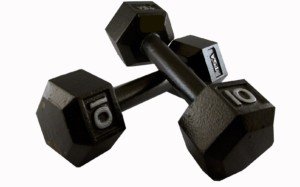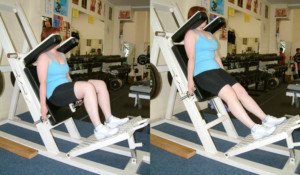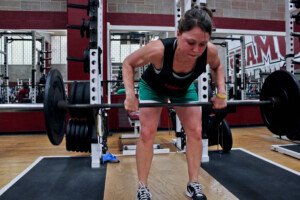
Even if a breast cancer survivor has never trained with weights before, she can experience remarkable benefits including that of increased survival.
“Once cleared by their surgeons for exercise, lifting weights can be an excellent form of exercise for breast cancer survivors,” says Jennifer Hartman, a clinical nurse practitioner specializing in breast health, women’s health and cancer genetics.
“Upper body weightlifting can help promote an increased range of motion and strength in the pectoralis major muscle (the large muscle along the chest).
“Often this muscle becomes tight after breast surgery.
“Additionally, most survivors are postmenopausal and many take medications that can reduce bone density.
“Weight-bearing exercises help improve bone density in women.”
Study on Strength Training
Florida State University conducted a study (published in 2014) that involved postmenopausal breast cancer survivors — putting them on a strength training program.

Chemotherapy can cause loss of bone density and muscle mass.
The goal should be to prevent this reduction.
Workouts against resistance increase bone density and add lean muscle mass.
This happens because when pulling or pushing against resistance, the activated muscle tugs at the bone, moving it.
This puts stress on the bone — and this stress strengthens the bone, forcing it to adapt to the new challenge. It becomes more dense.
The FSU study showed that breast cancer survivors who were postmenopausal could maintain bone density with a program of strength training.
Everyone benefits from picking up barbells, dumbbells, kettlebells, heavy balls and using strength training equipment.

Hack Squat. Credit: George Stepanek
Tips for Postmenopausal Women for Getting Started with Strength Training
• Breast cancer survivors who already belong to a gym can ask if any of its personal trainers are certified specifically in training breast cancer survivors. Such trainers can also be found online.

Shutterstock/CandyBox Images
• It’s wise to hire a personal trainer if you’ve never lifted weights before, even if that trainer is not certified specifically in training breast cancer survivors.
• If you don’t hire a personal trainer, don’t let this stop you from moving a barbell or handling dumbbells.

embhoo. CreativeCommons
• Consult with your breast surgeon as far as range of motion guidelines.
• Start out gradually with light weight and concentrate on proper form and technique.
• It’s okay to focus mostly on machine work rather than free weights.
Machines help isolate the muscles that you want worked.
Plus, they make it easier to adhere to correct form and good spinal alignment.
Excellent choices for machine strength training are the leg press, leg curl, leg extension, seated row, chest press and shoulder press.










































